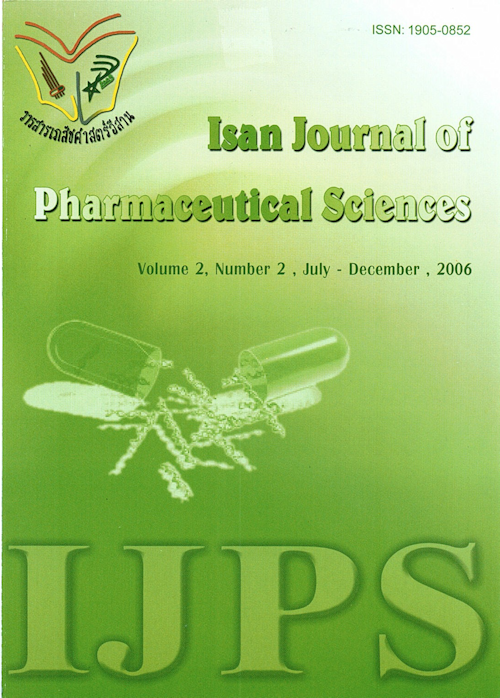Counseling on Health Promotion to Patients with Dyspepsia in Community Pharmacies
Main Article Content
Abstract
Article Details
In the case that some parts are used by others The author must Confirm that obtaining permission to use some of the original authors. And must attach evidence That the permission has been included
References
Bazaldua ov and Schneider FD. (1999). Evaluation and Management of Dyspepsia. American Family Physicain, 60, pp. 1773-1788.
Bond CM and Grimshaw JM. (1995). Multidisciplinary guideline development: a case study from community pharmacy. Health Bull (Edinb), 53(1), pp. 26-33.
Jones R, Lydeard S. (1989). Prevalence of symptoms of dyspepsia in the community. BMJ, 7, 98(6665), pp. 30-32.
Marklund B, Westerlund T, Branstad JO, Sjoblom M. (2003). Referrals of dyspeptic self-care patients from pharmacies to physicians, supported by clinical guidelines. Pharm World Sci. 25(4), pp. 168-172.
Meineche-Schmidt V, and Jorgensen T. (2003). “Alarm symptoms” in dyspepsia. How docs the general practitioner investigate?. Scand J Prim Health Care. 21(4), pp. 224-229.
Smith ML. 2005. Functional dyspepsia pathogenesis and therapeutic options-implications for management. Digestive and Liver Disease, pp.1-12.


